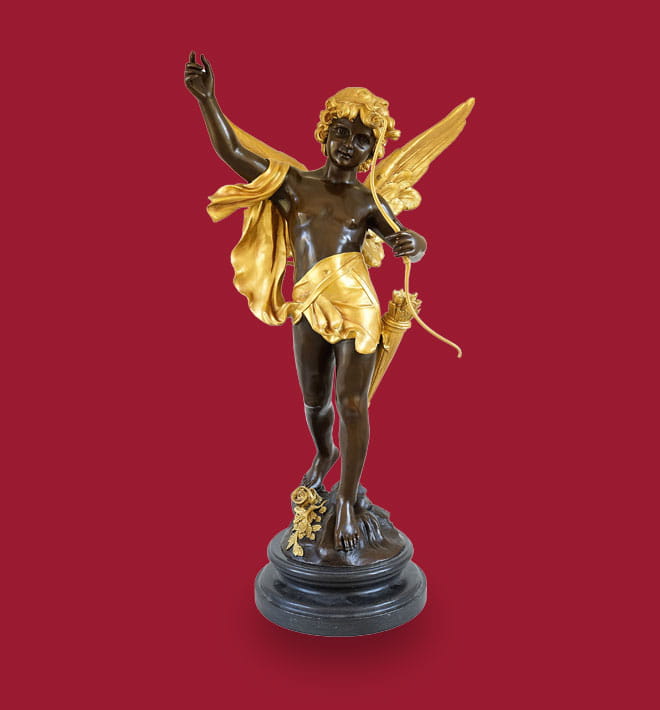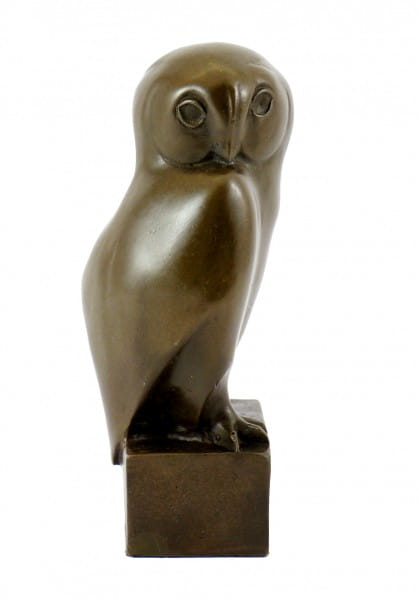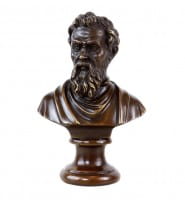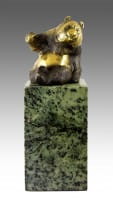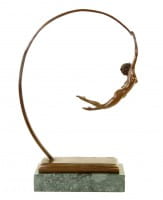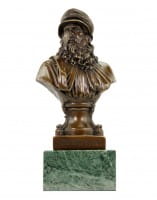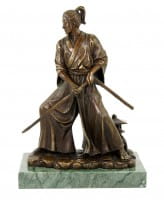Prices incl. VAT, free shipping worldwide
Ready to ship today,
Delivery time appr. 3-6 workdays










Product description
"Animal Sculpture - François Pompon Owl - Owl Statue"
| Weight | 0,6 kg |
François Pompon’s Owl Statue – A Harmonious Tribute to Nature - Signed
François Pompon emerged into the world on May 9, 1855, in the small town of Saulieu, France. His childhood was marked by the quiet rhythms of Burgundian farm life, where Pompon first encountered the animals that would shape his artistic destiny. Early sketches of livestock and wild game filled his notebooks as he developed an intuitive feel for form and proportion. By the time he relocated to Paris in the late 1870s, the budding sculptor had already absorbed the rhythms of both pastoral existence and city life, forging a creative sensibility that would bridge realism and simplicity.
Parisian Apprenticeship and the Path to Abstraction
In Paris, Pompon apprenticed under renowned sculptors, mastering traditional techniques of carving and modeling. Yet the bustling ateliers of Montparnasse and the salons of the École des Beaux-Arts could not extinguish his longing for elemental expression. In the early years of the 20th century, Pompon began to pare down his animal figures, stripping away superfluous detail to capture a singular essence. This quiet revolution in form would culminate in his most celebrated work, the elegant owl statue that remains an iconic symbol of serene introspection and modern minimalism.
Crafting the Bronze Harmony
Completed in 1922 at his humble studio near Rue d’Assas, Pompon’s depiction of the owl emerged as a masterpiece of reductive sculpture. The piece is cast in warm-toned bronze, with a subtle patina that balances gentle reflections and soft shadows. Rather than obsessively replicating every feather or talon, Pompon distilled the bird’s presence into clean, flowing lines. The rounded head and tapered body convey watchful alertness and poised stillness in equal measure. On its square base, the bird perches with quiet dignity, evoking the midnight hush of forests and the watchful patience of nature itself.
The Philosophy Behind the Simplicity
Pompon believed that true artistry lay in capturing an animal's spirit rather than its minutiae. In his own words, he sought “to reveal the living principle, the silent pulse that makes it more than a mere accumulation of parts.” The francois pompon owl epitomizes this credo: its smooth volumes and gentle contours invite contemplation, as if viewers can sense the owl’s measured breath and acute awareness. This simplified approach heralded a broader shift in modern sculpture—one that embraced abstraction without sacrificing emotional resonance or natural authenticity.
Reception and Lasting Influence
When first exhibited at the Salon d’Automne in 1922, the owl sculpture astonished viewers accustomed to ornate detail. Critics praised its serene expression and harmonious balance, hailing Pompon as a visionary who brought a new language of purity to animal forms. Museums across Europe and North America soon acquired the work, the owl statue were cast, ensuring its presence in public squares and private collections alike. Pompon’s vision inspired later generations of sculptors to explore minimalism, animal symbolism, and the quiet power of refined line.
The Enigmatic Owl
Owls have long captivated human imagination, their silent flight and luminous eyes stirring associations with wisdom, mystery, and the veil between the known and the unknown. As nocturnal hunters, they glide through moonlit forests, their senses attuned to the subtlest rustle of prey beneath fallen leaves. Across cultures, these birds have served as guardians of ancient knowledge, guiding souls through darkness and symbolizing the power to see what others cannot. In the stillness of night, the owl’s presence embodies both alert solitude and profound connection to nature’s unseen rhythms—qualities that sculptors like François Pompon sought to distill into bronze, capturing not only its form but the very essence of its enigmatic spirit.
A Timeless Testament to Observation
Today, François Pompon’s owl remains a compelling testament to the art of seeing—an invitation to pause, to recognize form as memory, and to honor the silent grace of the natural world. Whether displayed in a scholarly study, a forested garden, or a modern gallery, this Francois pompon owl continues to captivate with its unadorned beauty. By reducing detail to its essence, Pompon created more than a decorative owl statue; he crafted a timeless meditation on presence, stillness, and the profound bond between artist, creature, and observer.
Height: 14 cm
Width: 5.5 cm
Depth: 5.5 cm
Weight: 600 g
100% bronze
Our advantages
free shipping
Worldwide free shipping
14 days money back
You can cancel your order
within 14 days
secure payment services
Paypal, Master Card, Visa, American Express and more

